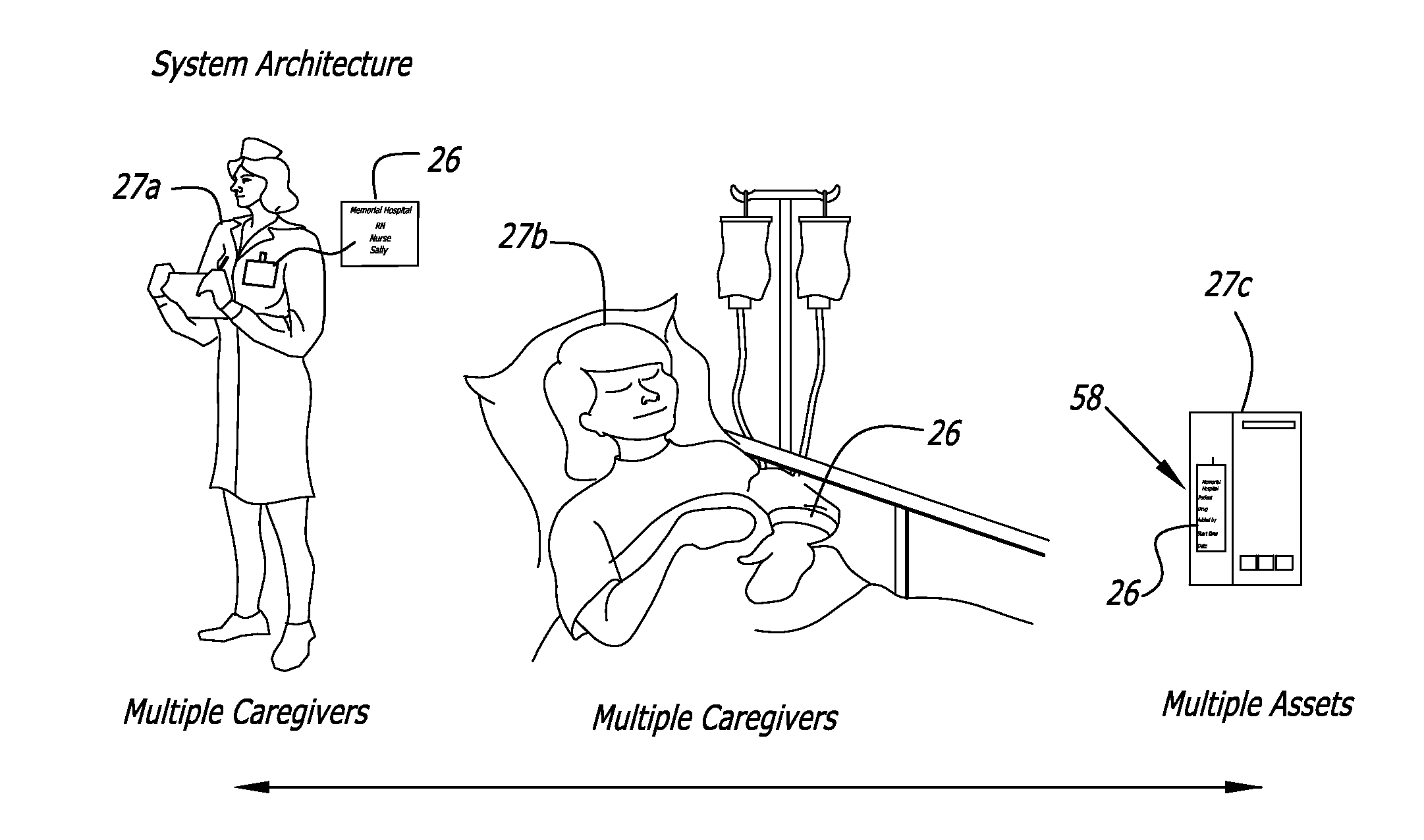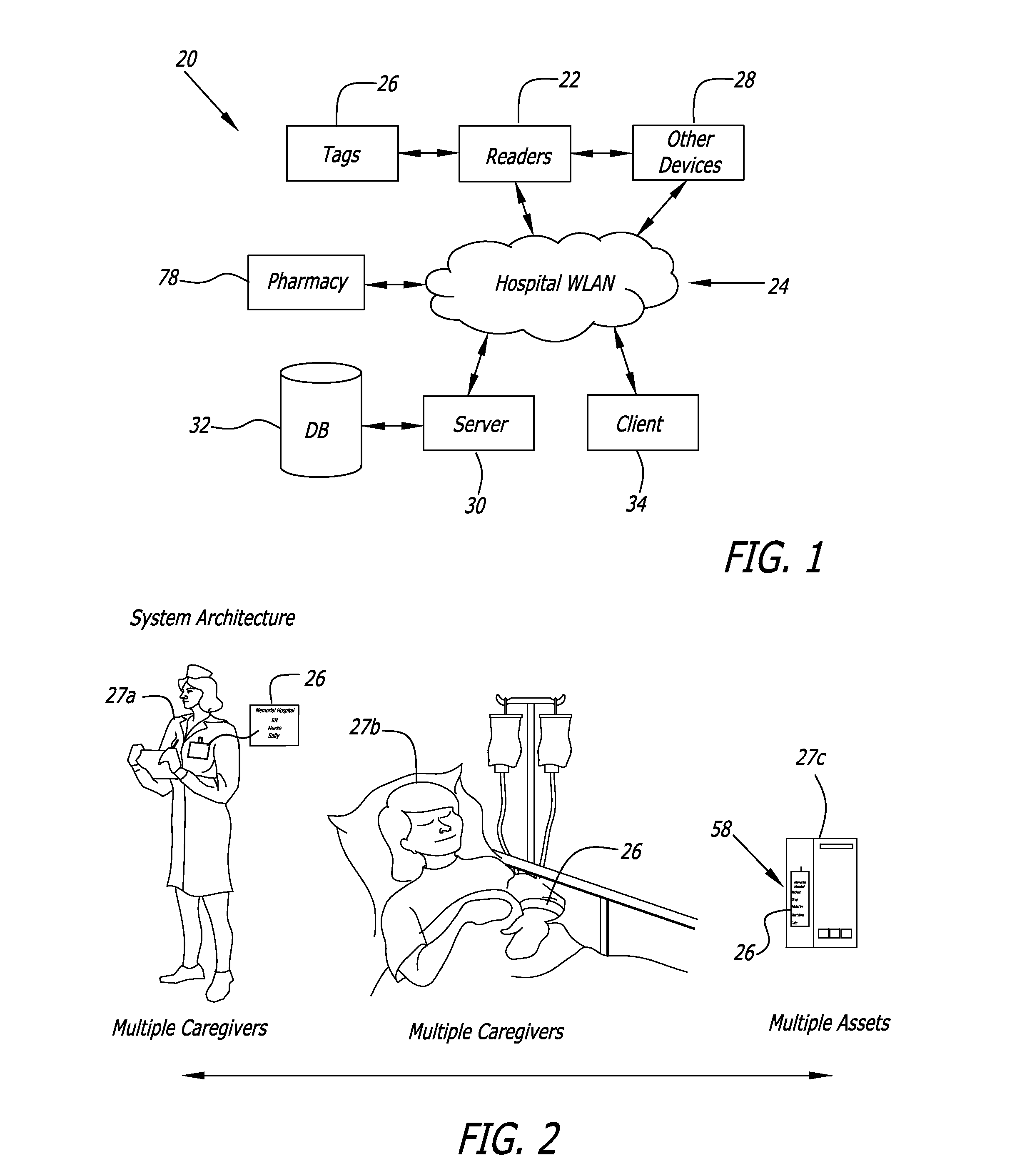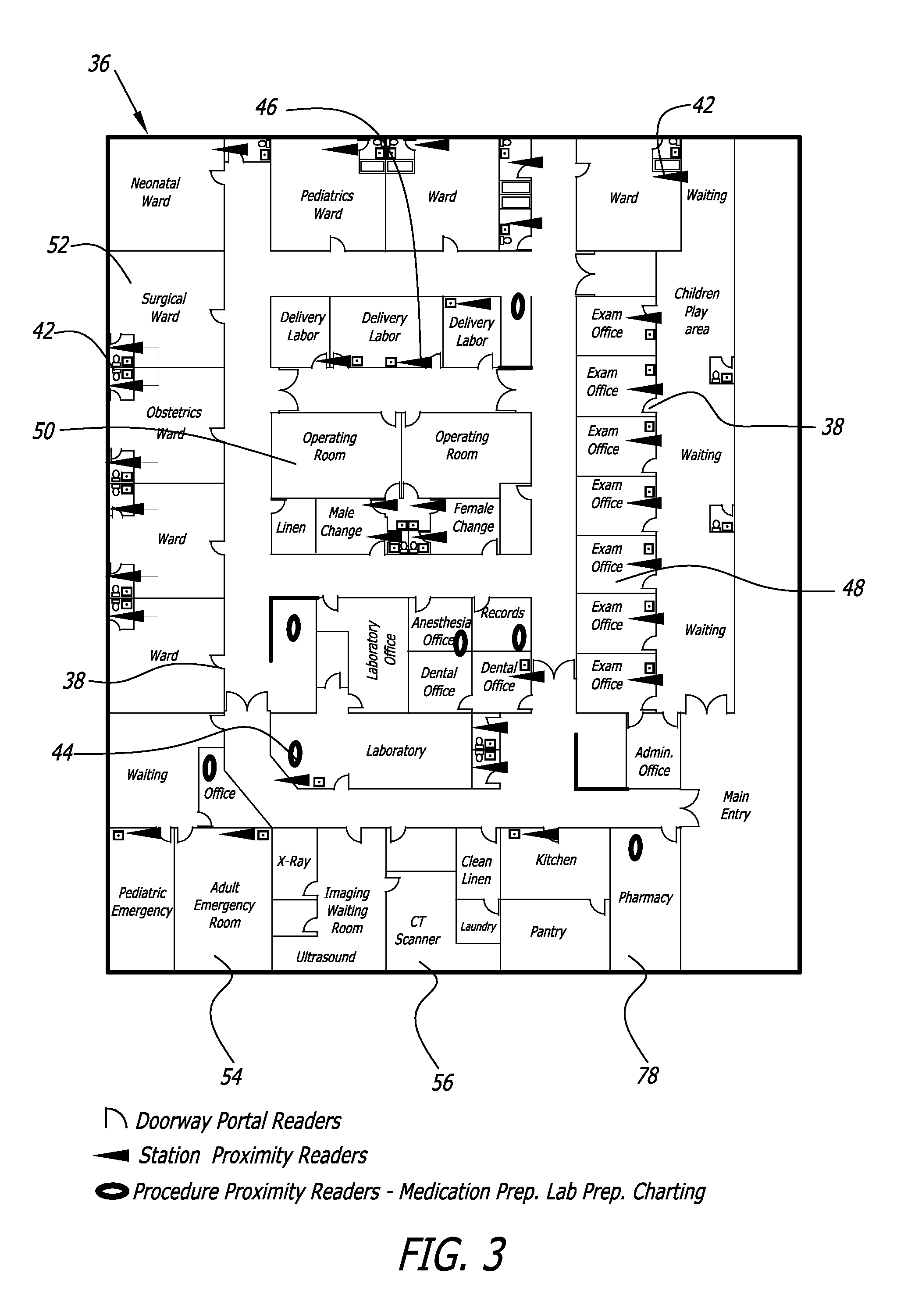Tracking system for healthcare facilities
- Summary
- Abstract
- Description
- Claims
- Application Information
AI Technical Summary
Benefits of technology
Problems solved by technology
Method used
Image
Examples
embodiment 1
Schedule II Pain Medication Delivery (FIG. 8)
[0089]An example of an IS plan 72 according to step 202 is a request for a caregiver 27a to inject a schedule II pain medication into the IV (intravenous) line of a patient 27b. The IS plan 72 is to be carried out within a twenty minute window, the expected time period, to be on time. Based on this IS plan 72 module 200 would define twenty minutes from the start of the IS plan 72 as bounding the expected time period and, for example, one hour to bound the maximum time period.
[0090]According to step 204, software module 200 would identify or receive a reader ID 62 corresponding to the hospital bed 40 of the patient 27b, a tag ID 64 corresponding to the administering caregiver 27a, and optionally a tag ID 64 corresponding to a witnessing caregiver 27a.
[0091]According to step 206 software module 200 would define the following expected sequence of interactions: (1) Pyxis® station or pharmacy 78 to have medication available, (2) administering...
embodiment 2
Procedure Requiring Equipment Delivery (FIG. 8)
[0094]According to step 202, an IS plan 72 is received for a caregiver 27a to perform a procedure on a patient 27b requiring the delivery of equipment 27c. The patient 27b is also contagious. The procedure is not extremely urgent and will be performed within the expected time period or twenty-four hours as the equipment 27c may be available. According to this example, the expected time period is twenty-four hours and a maximum time period selected to be three days. The maximum time period corresponds to the maximum time that the interaction sequence would be expected to take based upon historical records.
[0095]According to step 204 the IS plan 72 would define an expected sequence of interactions that identify a reader ID 62 corresponding to a glove and robe station 46, a reader ID 62 corresponding to a patient bed 40, a tag ID 64 corresponding to a patient 27b, a tag ID 64 corresponding to a caregiver 27a, and a tag ID 64 corresponding ...
embodiment 3
A Change in Indication or Diagnosis for a Patient: Patient is Contagious and Less Stable
[0099]In this third example an existing IS plan 72 is replaced with a new IS plan 72 based upon a change in the diagnosis and / or condition of the patient 27b. In this example the patient 27b that was stable and not contagious is now unstable and contagious. According to step 202 a new IS plan 72 replaces and supersedes an existing IS plan 72 having an addition of new equipment 27c, i.e., cardiac monitoring, new medications (heart rhythm medication), new temporal expectations (defined time periods between visits is reduced), and other requirements (glove and robe). This example is different than the prior two because there are actually two different interaction sequences—one for each of two caregivers 27a. The expected sequence time for the sequences is ten minutes or minimum and the maximum sequence time is thirty minutes because this is a borderline emergency.
[0100]According to step 204 assets a...
PUM
 Login to View More
Login to View More Abstract
Description
Claims
Application Information
 Login to View More
Login to View More - R&D
- Intellectual Property
- Life Sciences
- Materials
- Tech Scout
- Unparalleled Data Quality
- Higher Quality Content
- 60% Fewer Hallucinations
Browse by: Latest US Patents, China's latest patents, Technical Efficacy Thesaurus, Application Domain, Technology Topic, Popular Technical Reports.
© 2025 PatSnap. All rights reserved.Legal|Privacy policy|Modern Slavery Act Transparency Statement|Sitemap|About US| Contact US: help@patsnap.com



